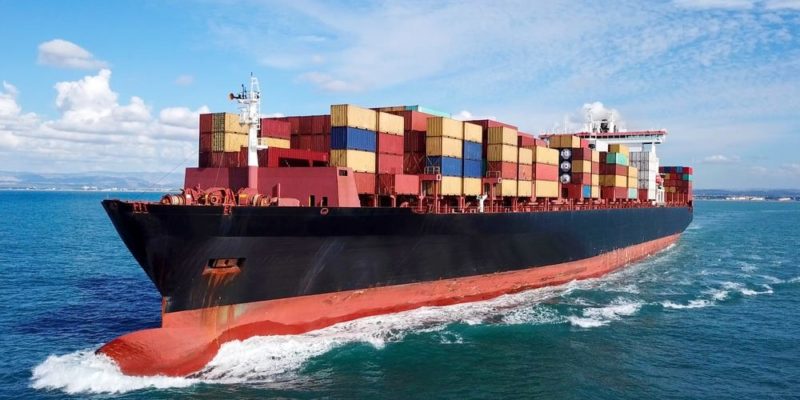We explain what maritime transport is, its advantages, disadvantages and types that exist. Also, the documentation required.

What is maritime transport?
Maritime transport is a form of water transportation that moves across the surface of the oceans. It is linked to ships and the movement of passengers and merchandise from one continental region to another.
This It is the most used mode of transportation of goods in the world whole, whose very nature is international in itself. It is also the transport that allows the greatest movement of goods over long distances (up to 500,000 tons of dead weight in ULCC oil tankers).
On the contrary, its importance in the transfer of passengers has decreased since the invention and massification of air transport, much faster. In this area, it is sustained only on short voyages or in the case of cruises and other tourist maritime trips.
On the other hand, a country's maritime transport is usually handled by the merchant navy, a collegiate body recognized worldwide by the International Maritime Organization. It is a highly qualified organization for the management of cargo or passenger vessels, both on international and cabotage trips.
See also:
- Cargo transportation
- Rail transport
- Multimodal transport
History of maritime transport
Maritime transport was probably the oldest version of the commercial exchange known to humanity. This is because it was put into practice by ancient civilizations that arose on the banks of rivers and seas.
For example, the Phoenicians who emerged around 1200 BC. C., were skilled navigators and maritime traders, who expanded their area of influence to the African region and the Middle East of the Mediterranean, eventually coming into conflict with the interests of Ancient Rome.
But The true explosion of maritime transport took place under the colonialist and imperialist model of Europe. During the 15th to 19th centuries, European powers used this type of transportation to create colonies to extract resources that were negotiated with the metropolis, on terms always favorable to it.
Thus, international naval exploration and trade initiatives emerged, such as the East India Company, among others. This was the prelude to modern maritime transport, created under the model of the 19th century steamship, the result of the enormous technological changes of the Industrial Revolution. The arrival of the engine brought more powerful shipswhich did not depend on the wind or rowing.
Types of maritime transport
Maritime transport is classified according to two different regimes, depending on the amount of merchandise to be transported. These regimes are:
- Charter regime. It deals with the traffic of merchandise in large volumes, especially in the areas of solid bulk (that is, solid materials in small grains, such as minerals, cereals, etc.) or liquid bulk (measurable liquid materials, such as oil), or even industrial products in large numbers of units (such as entire automobiles or even entire manufacturing plants).
- Regular line regime. It deals with the transportation of general cargo in containers, generally consisting of valuable merchandise, of delicate transport or more delicate than the previous item. These types of trips have frequent stopovers, stable rates and long-term services.
In another order of ideas, within maritime transport activities such as water skiing, rescue transport or recreational navigation (yachts, for example) could also be considered.
Advantages of maritime transport

The great advantage of maritime transport is, clearly, the volume of the cargo. Whether it is goods or passengers, ships allow mass transportation, in facilities of different nature.
This generally implies high safety marginssince maritime transactions are accompanied by legal and logistical documentation (the manifest of the ship, for example). Every transaction is standardized and supervised by the International Maritime Organization (IMO), attached to the United Nations.
Disadvantages of maritime transport
Broadly speaking, the disadvantages of shipping involve time. The boats They are bulky, heavy and slow devices.which also require specialized knowledge to conduct: that is why merchant mariners carry out specialized trainingequivalent in many ways to a complete university study.
Maritime transport documents
The documentation required to establish commercial maritime transportation usually includes the following:
- Bill of Landing (BL). This is the transportation contract established between the shipping company and the owner of the cargo. It is a document issued by the shipping company in confirmation of the receipt of the cargo on board its ships.
- Packing List. This is a detailed list of the goods shipped, detailing weight, composition, volume, value and other important details.
- Commercial invoice. The document that proves the purchase of transportation services or the merchandise transported directly. This is the commercial support of the operation.
- Certificate of origin. A certification of the manufacturing of goods transported in a given country, which is essential in tariff or tax matters.
- Letter of credit. The formal payment agreement between buyer and seller, in cases where it is an international sales transaction.
Ground transportation
If maritime transport takes place on the sea and oceans, land transport is the one that develops landthat is, on the continental surface. This requires land vehicles equipped with wheels (trucks, cars, etc.) or that run on rails (such as railways).
Depending on the type of land transport, the load capacity or speed may be greater. However, in all cases this transport is subject to the geographical features of the Earth's crust, as well as rivers, oceans and lakes.
Air transport
air transport is one that uses vehicles capable of crossing the airthat is, to fly. These vehicles are airplanes, light aircraft and similar transports. It is the most recent form of transportation, the most expensive and the one that involves the most cutting-edge technology.
Air transport is mainly intended for passenger transport. However, there are bulky aircraft specialized for the movement of cargo.
Continue in: Air transport
References
- “Marine transport” in Wikipedia.
- “Maritime transport” in The World Order (EOM).
- “Advantages and disadvantages of maritime transport” in MAITSA Customs Coverage.
- “Marine Transportation” on Study.com.
- “Shipping” in The Encyclopaedia Britannica.





